Sidebar in Maps
The SPARC maps interface features a sidebar to locate datasets more easily.
The sidebar is a powerful tool that allows you to find datasets from within the Maps interface.
What can I do with the Maps Sidebar?
Access datasets from Maps
The sidebar can be used to:
- See all the datasets that are currently available;
- Search all the datasets that match one or several keywords (e.g., all the datasets that match
stomach); - Filter the results using one constraint (e.g., filter all the datasets that match
Dog); - Filter the results using several constraints (e.g., filter all the datasets that match both
DogandColon); and - Click the search history values to show the recent search.
Data a views from a dataset
anatomical scaffolds
Simulations
Access to simulations is done through the sidebar, as illustrated here.
The Basics
Open the sidebar
Open the sidebar by clicking on the chevron icon on the right side of the screen (Figure 1).
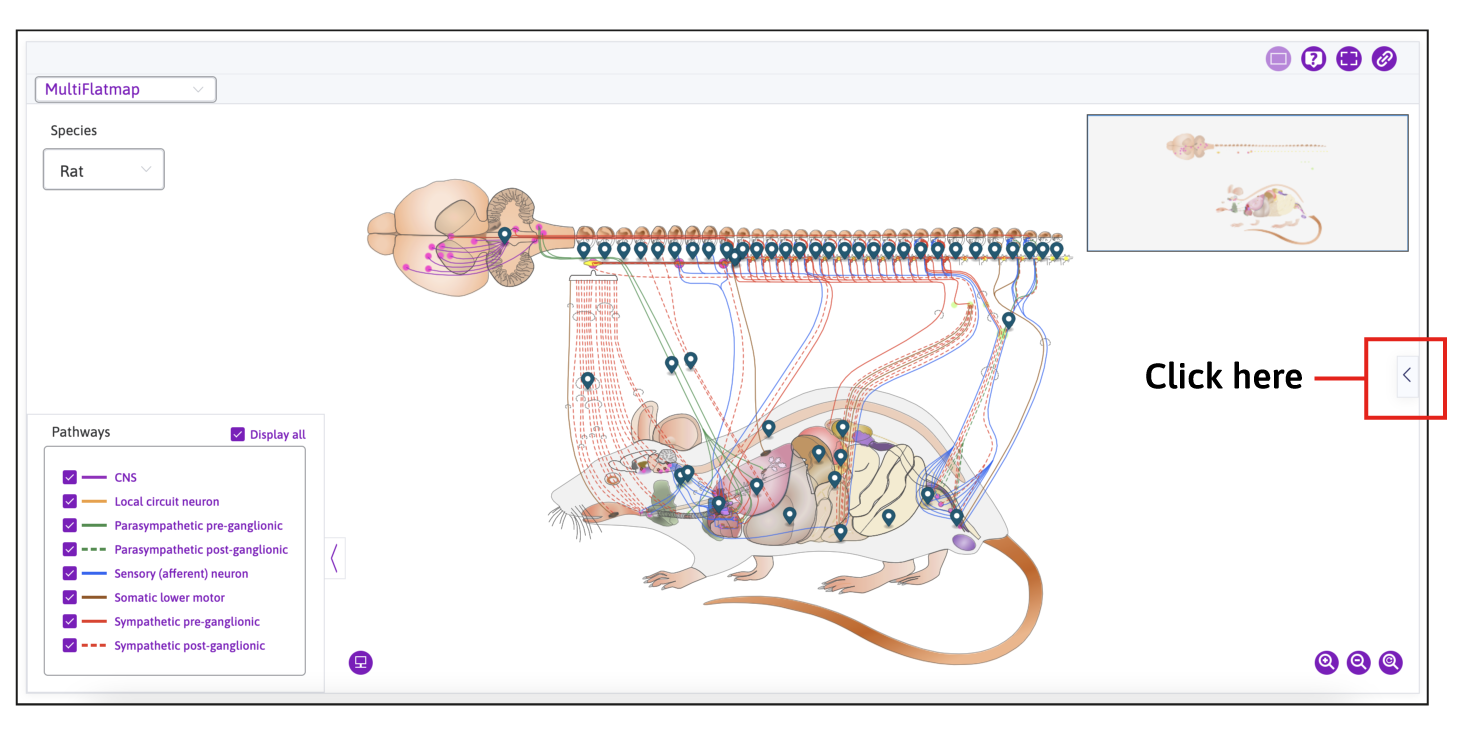
Figure 1: Opening the sidebar
The Display
There are a number of controls within the sidebar to help you find the datasets you are interested in finding.
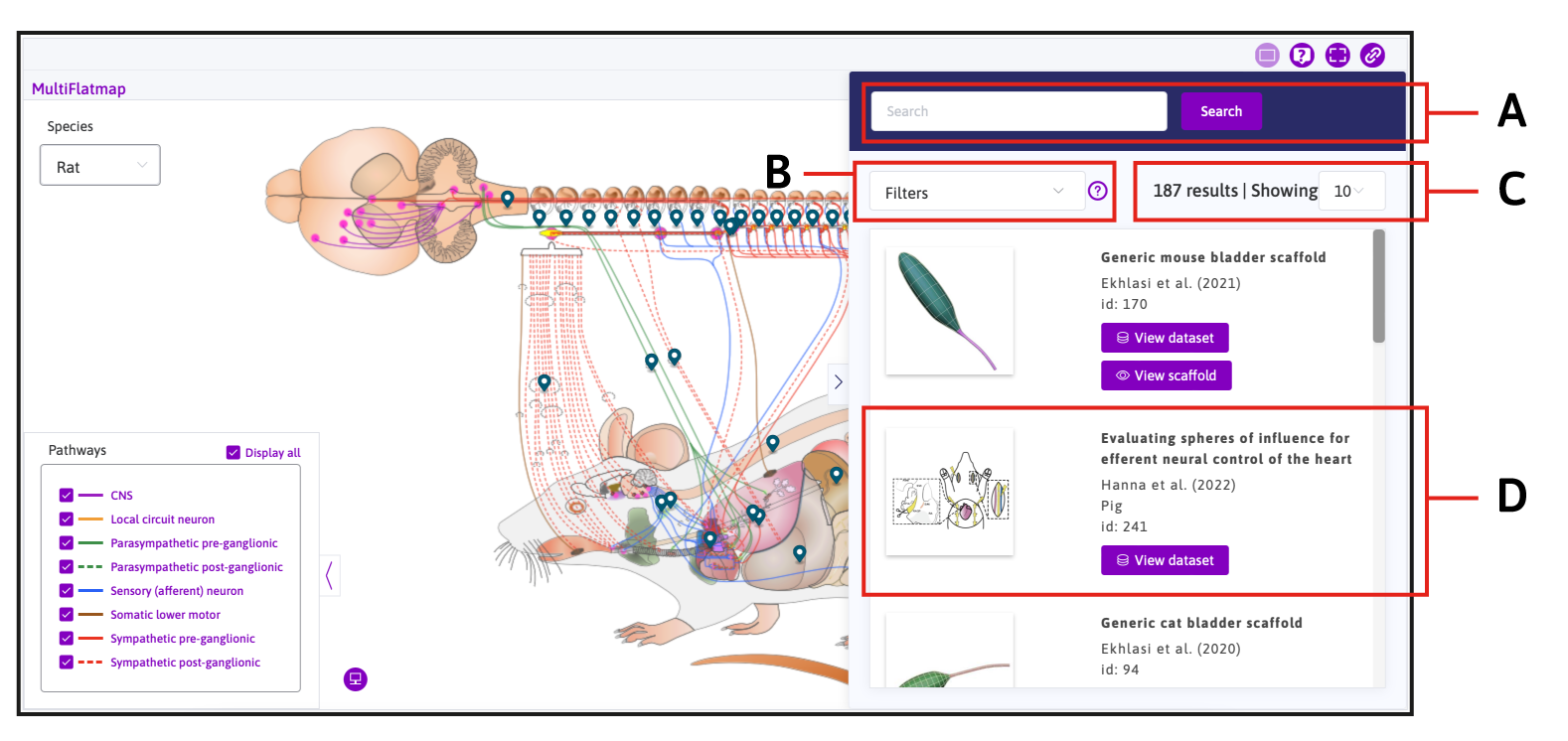
Sidebar controls
A. The search panel searches within the current results shown in the sidebar.
B. The filter dropdown allows you to select certain criteria in order to filter the results in the sidebar.
C. The number of results that are returned based on the search terms and filter criteria.
D. An individual result shows you a number of pieces of metadata including the dataset title, the creators, the associated species (if applicable and set) and the ID of the dataset.
You also have different buttons depending on the contents of the dataset. Clicking on these buttons will either open the dataset in a new tab or open the corresponding image, scaffold, or simulation within the Map interface.
Sidebar dataset cards
- Mouse over the sidebar dataset card will highlight the feature on the flatmap.
- Clicking the
View Datasetbutton (e.g.,View Dataset 99) will open the dataset page. - Clicking the data type buttons (e.g.,
Scaffolds (1)) will switch the thumbnails to scaffold thumbnails, and it will show theView Scaffoldbutton; clicking that will open the scaffold. - Clicking the copy to clipboard button will copy the information of the dataset card to clipboard.
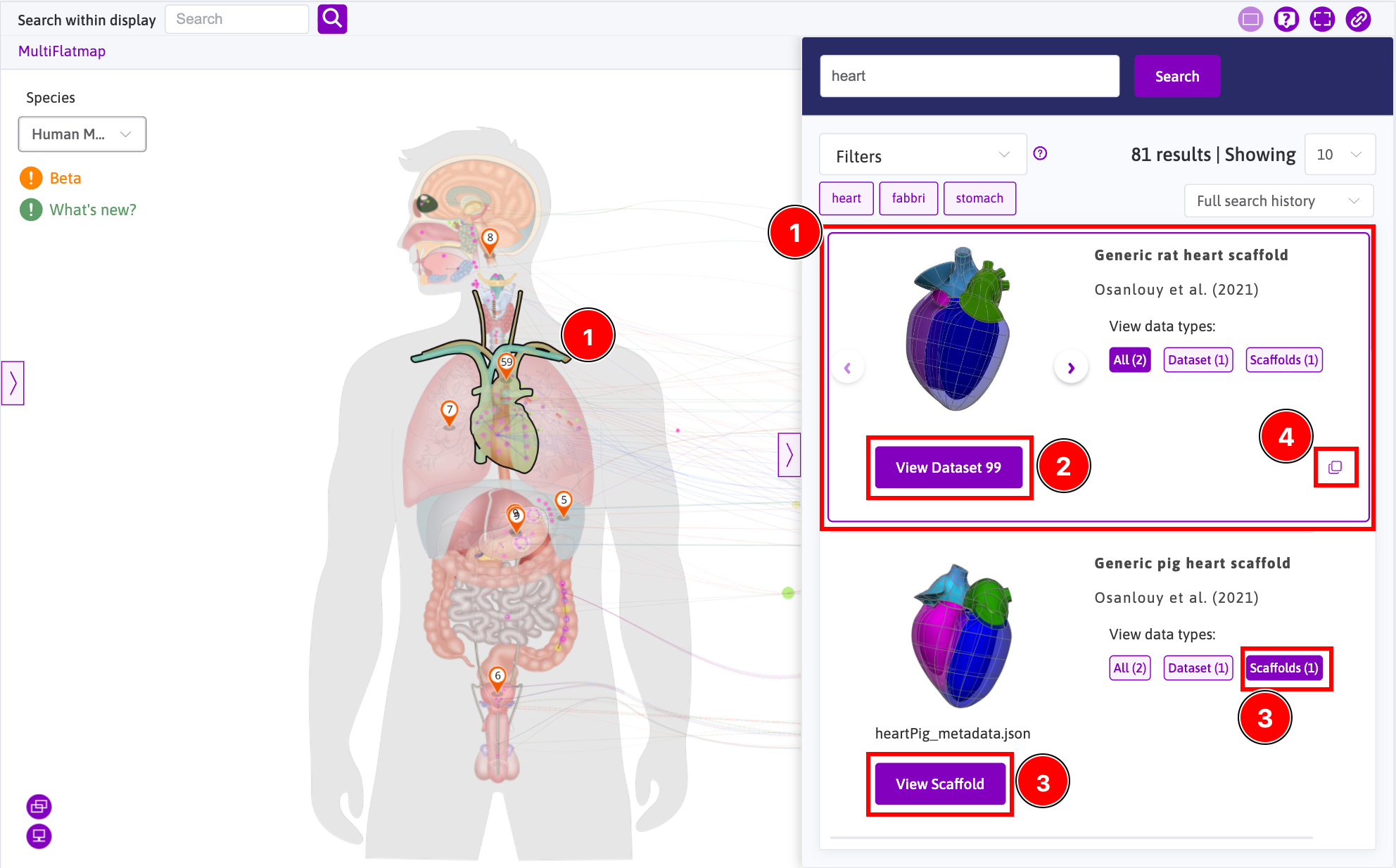
Sidebar dataset cards
What can I do with the sidebar?
Find Datasets and Models
- See all the datasets that are currently available by opening the sidebar
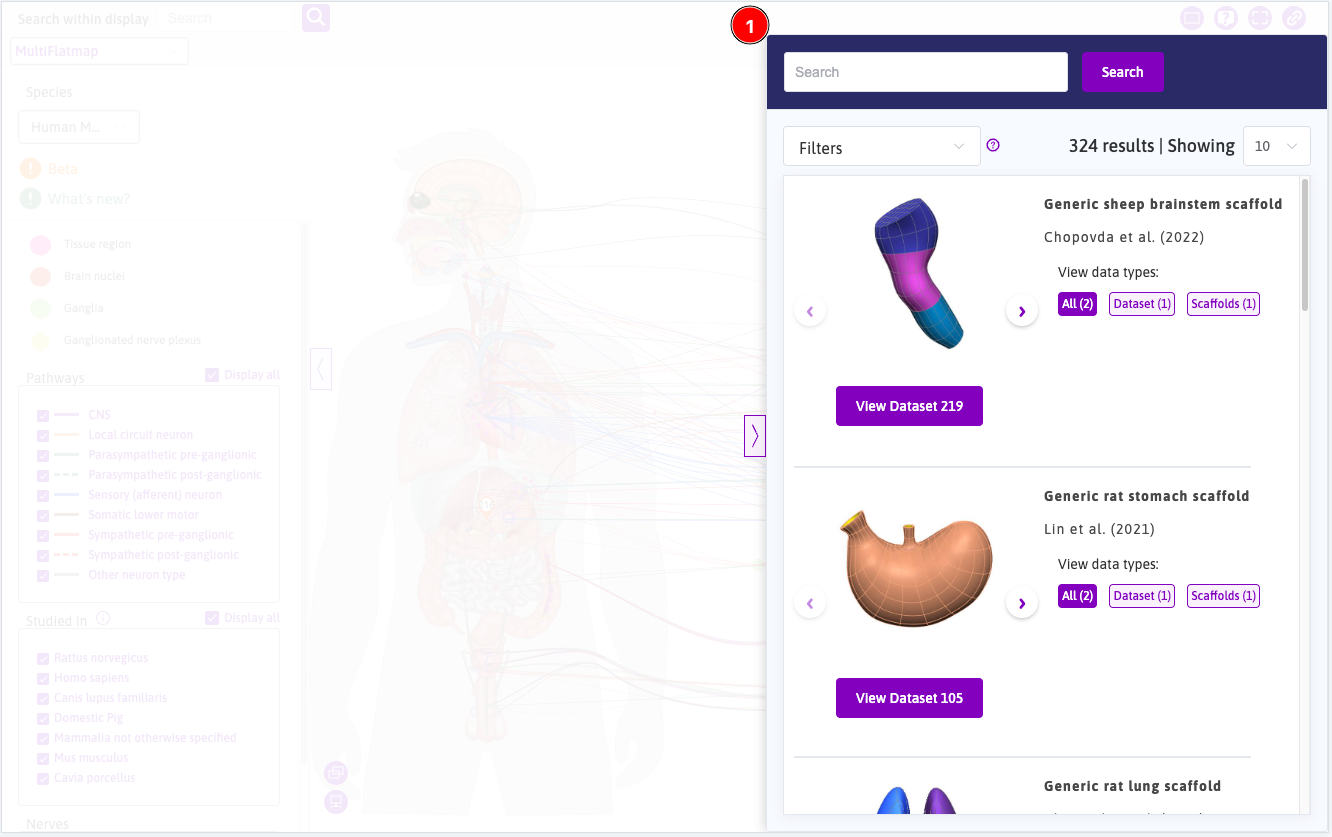
Search
- Search all the datasets that match one or several keywords (e.g., all the datasets that match
stomach);
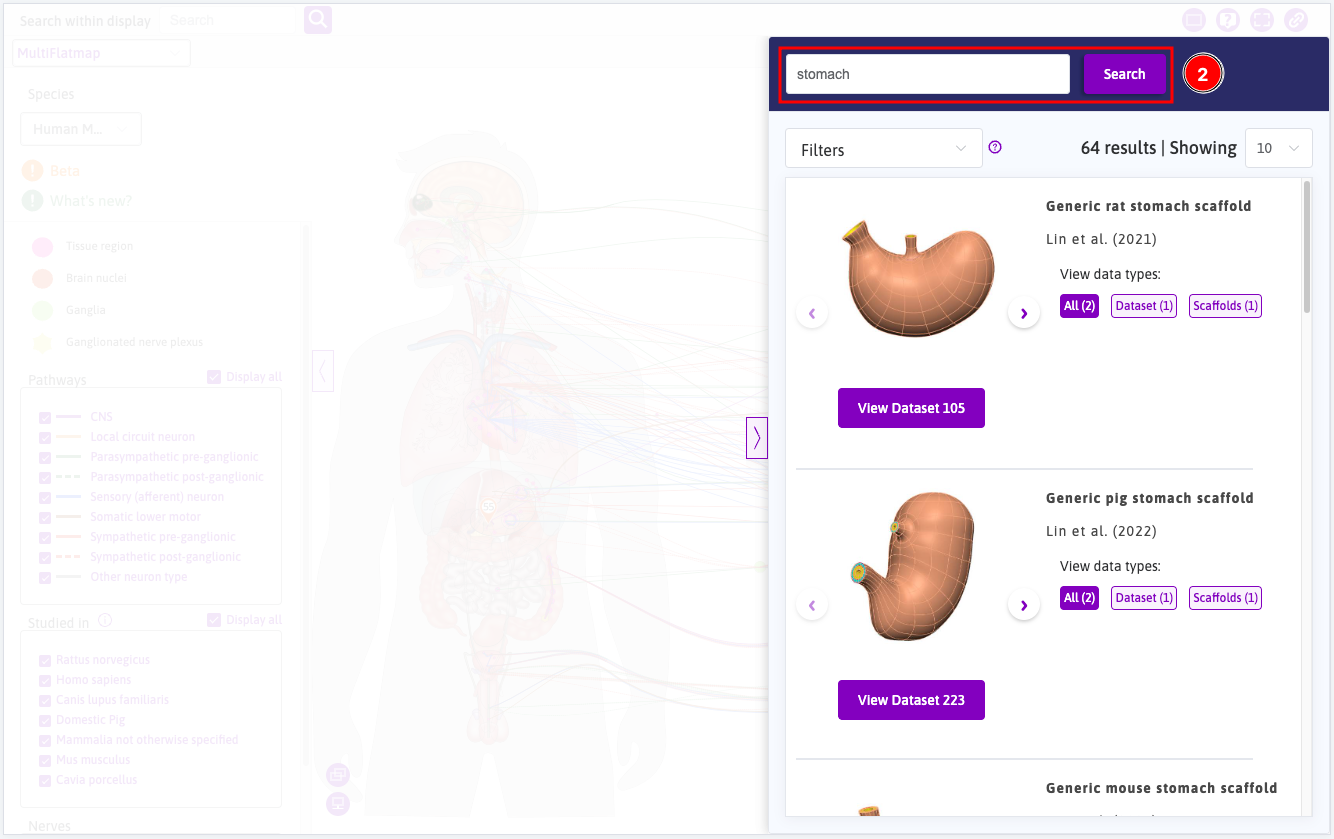
Filter
Filter your search results. The filter dropdown contains multiple different criteria that you can select from, be it the anatomical structure you are interested in or the type of data you want to view. Learn how filters work in detail.
Filters work by applying the following rules:
- Within categories the filter uses an OR condition
example: "heart" OR "colon" - Between categories the filter uses an AND condition
example: "rat" AND "lung"
For example:
- Filter the results using one constraint (e.g., filter all the datasets that match
Dog); - Filter the results using several constraints (e.g., filter all the datasets that match both
DogandColon); and
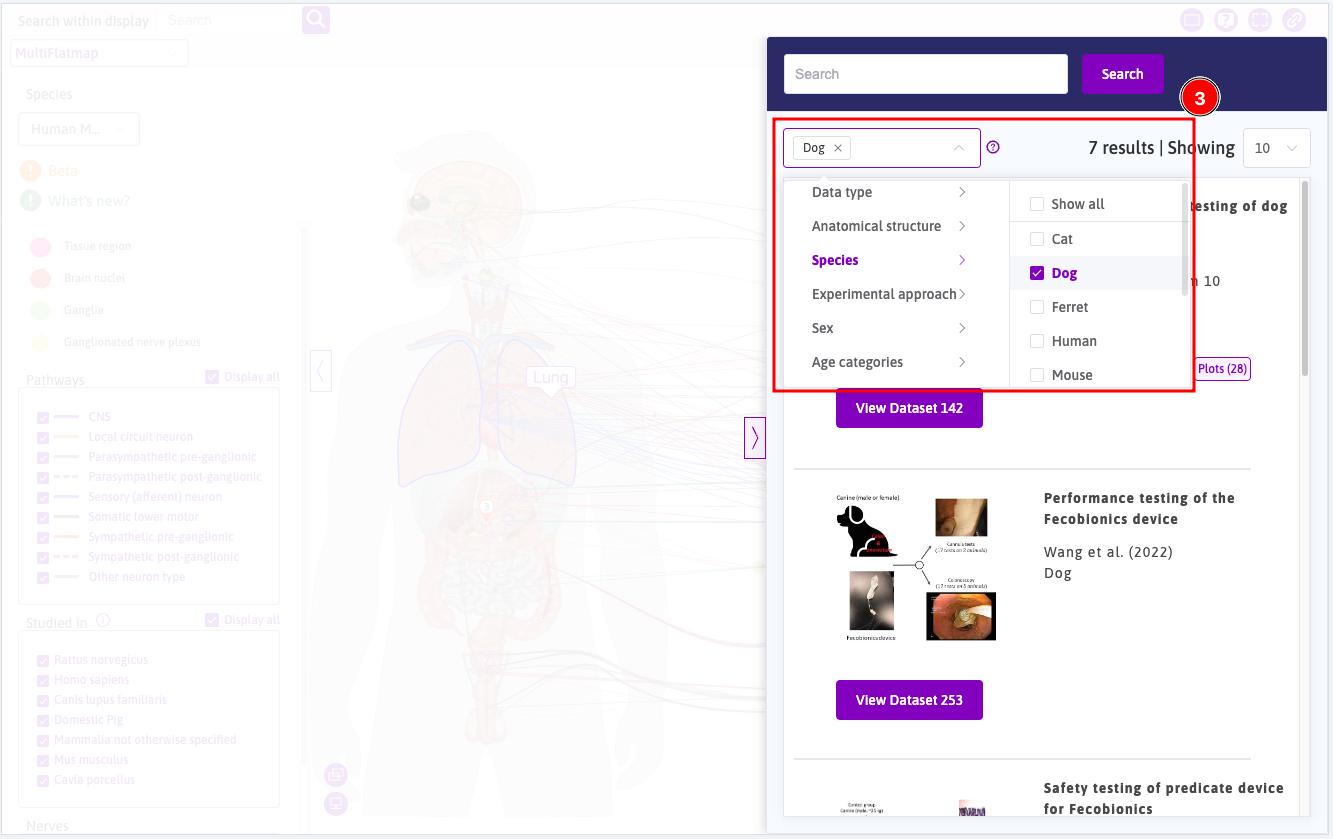
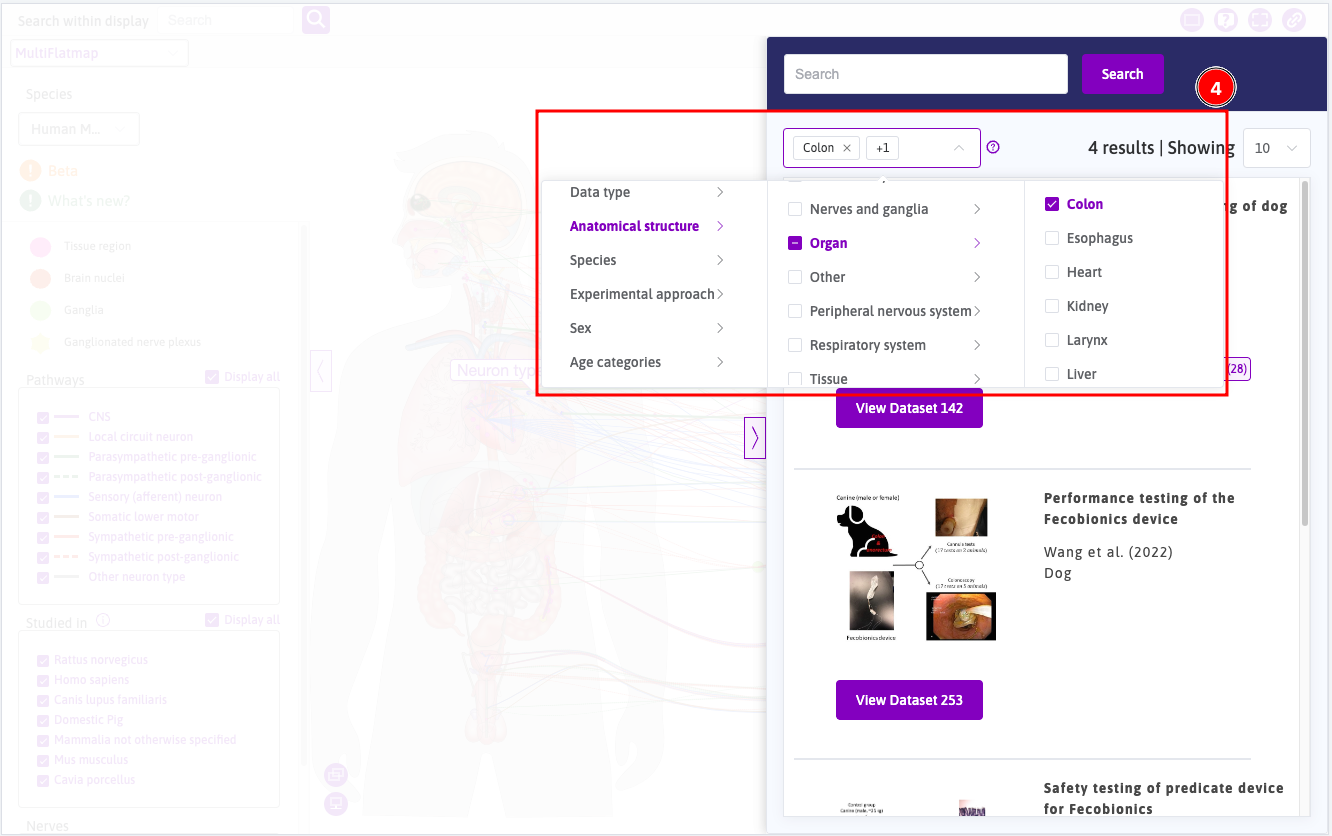
View search history
- Click the search history values to show the recent search:
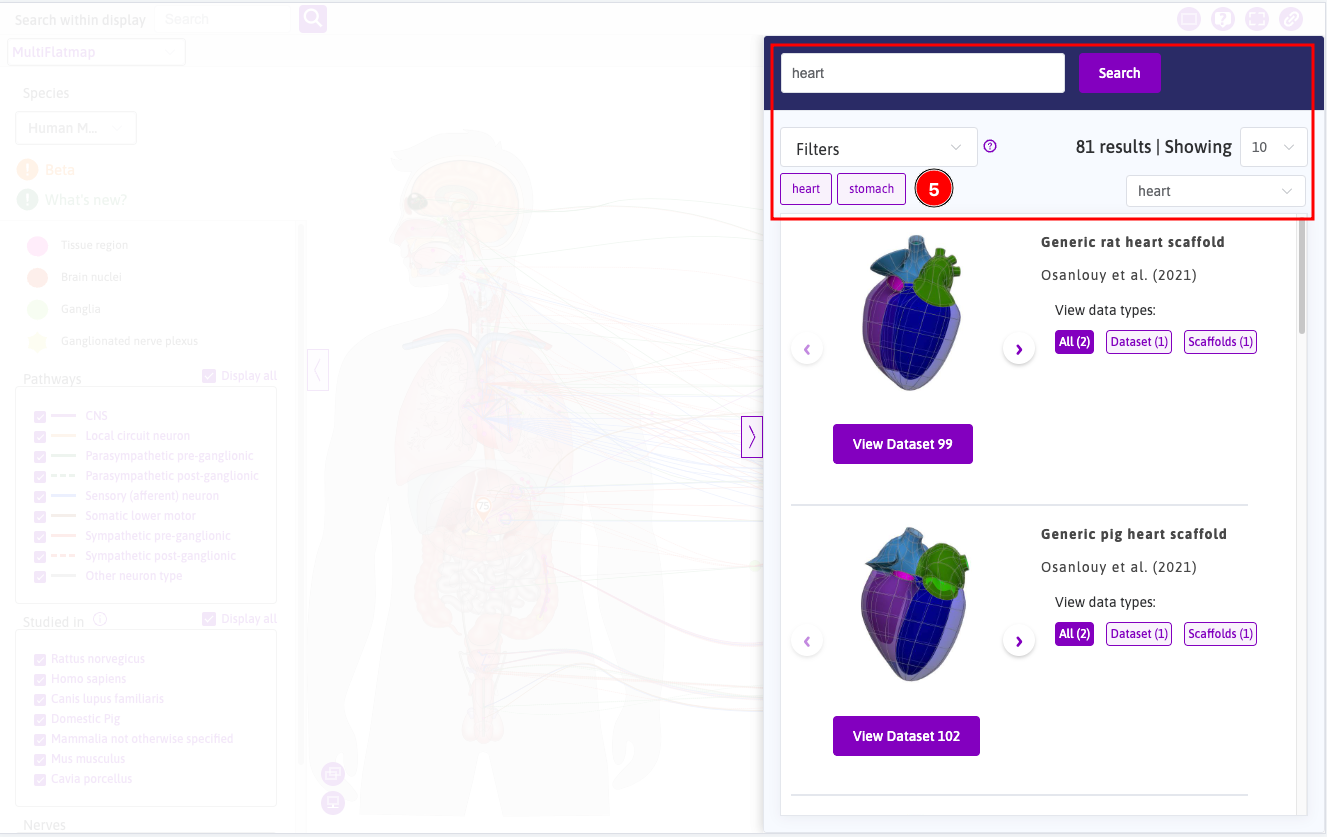
View Connectivity
When the Connectivity tab is opened in the sidebar by clicking a neuron on flatmap (e.g., clicking "Neuron type below unbranched 10"), the information in the connectivity tab is connected with the sidebar's Search tab and also with the flatmap.
- Clicking
Explore origin data,Explore destination data, orSearch for data on componentswill switch to theSearchtab by applying the connectivity data in filters. - Clicking
Show connectivity on mapwill move the map to show the highlighted area. - Clicking
Copy to clipboardbutton will copy the connectivity information to clipboard.
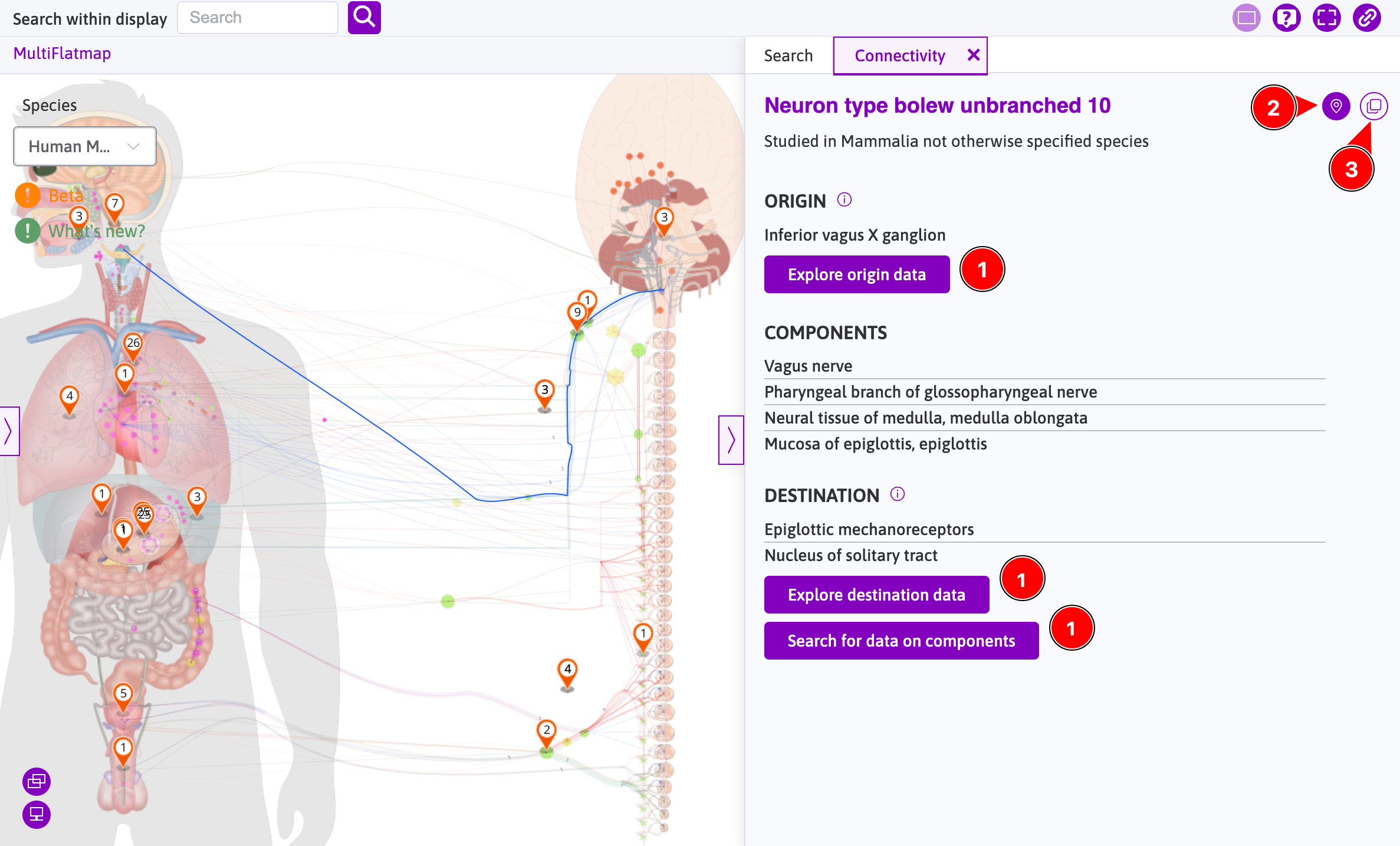
Access anatomical scaffolds
How to use filters in the sidebar
We are now going to look at how filters work in detail.
- Start by opening the filter dropdown (Figure xx).
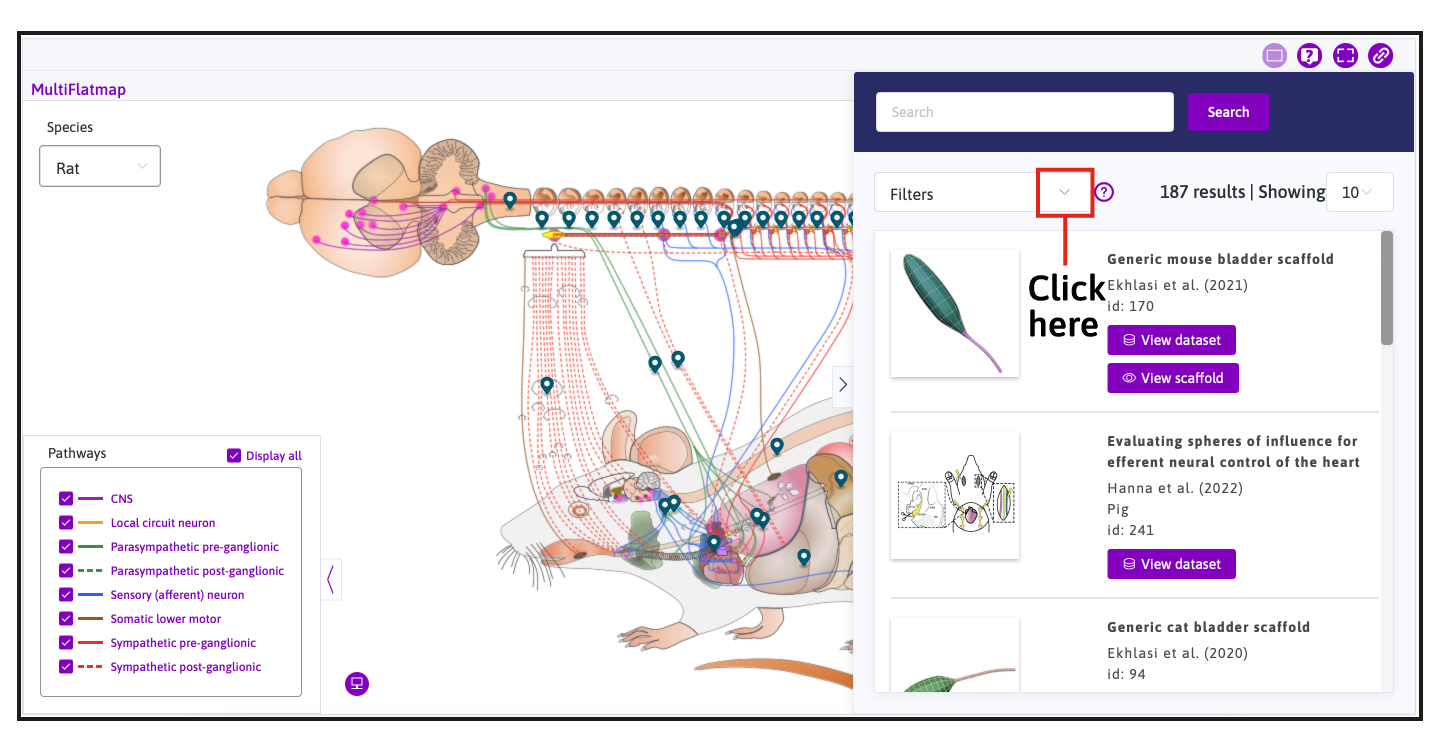
Open filter dropdown
The filter dropdown contains multiple different criteria that you can select from, be it the anatomical structure you are interested in or the type of data you want to view. In Figure XX, you can see that there are 187 results before applying any filters:
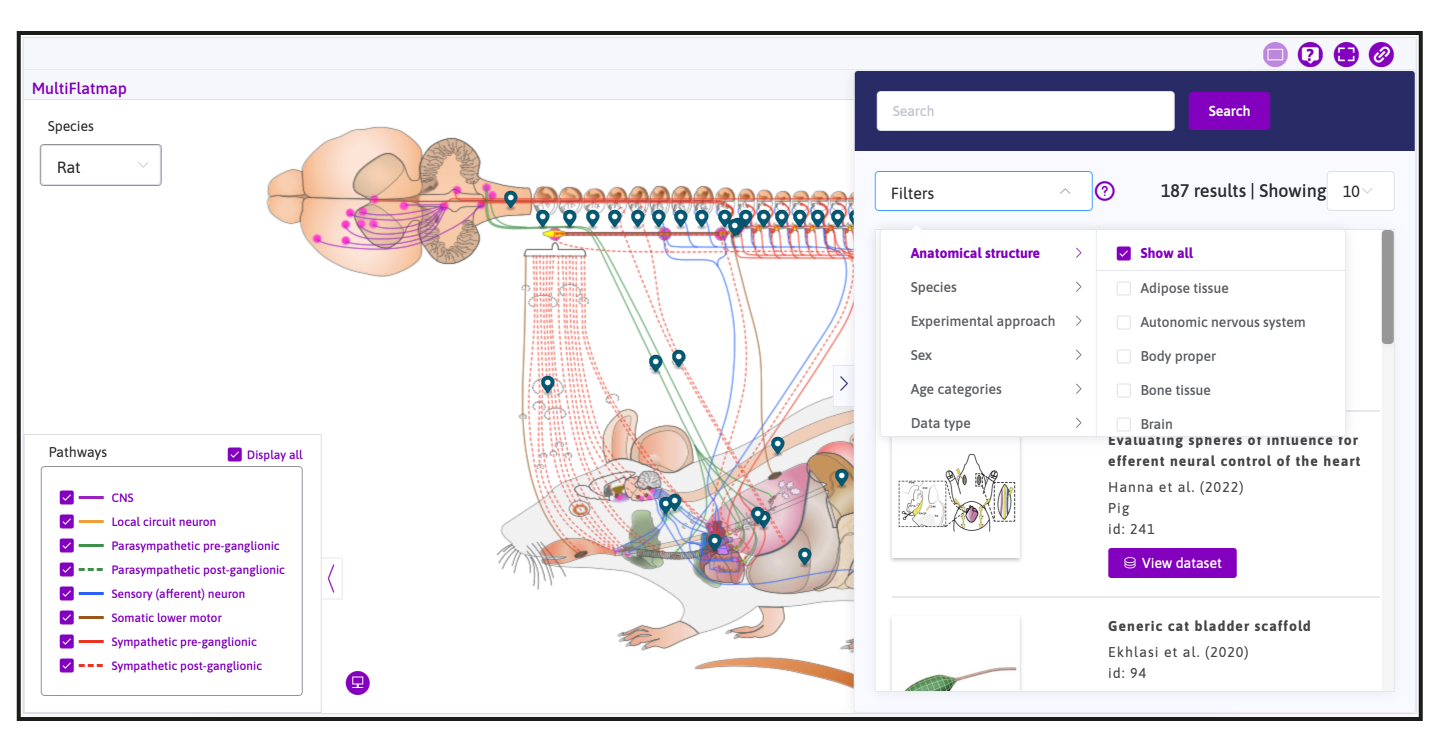
Filter optioons
- Apply a filter. For example, select "Colon" from the Anatomical structure category. From Figure XX, you can see that the results have reduced to 31 results:
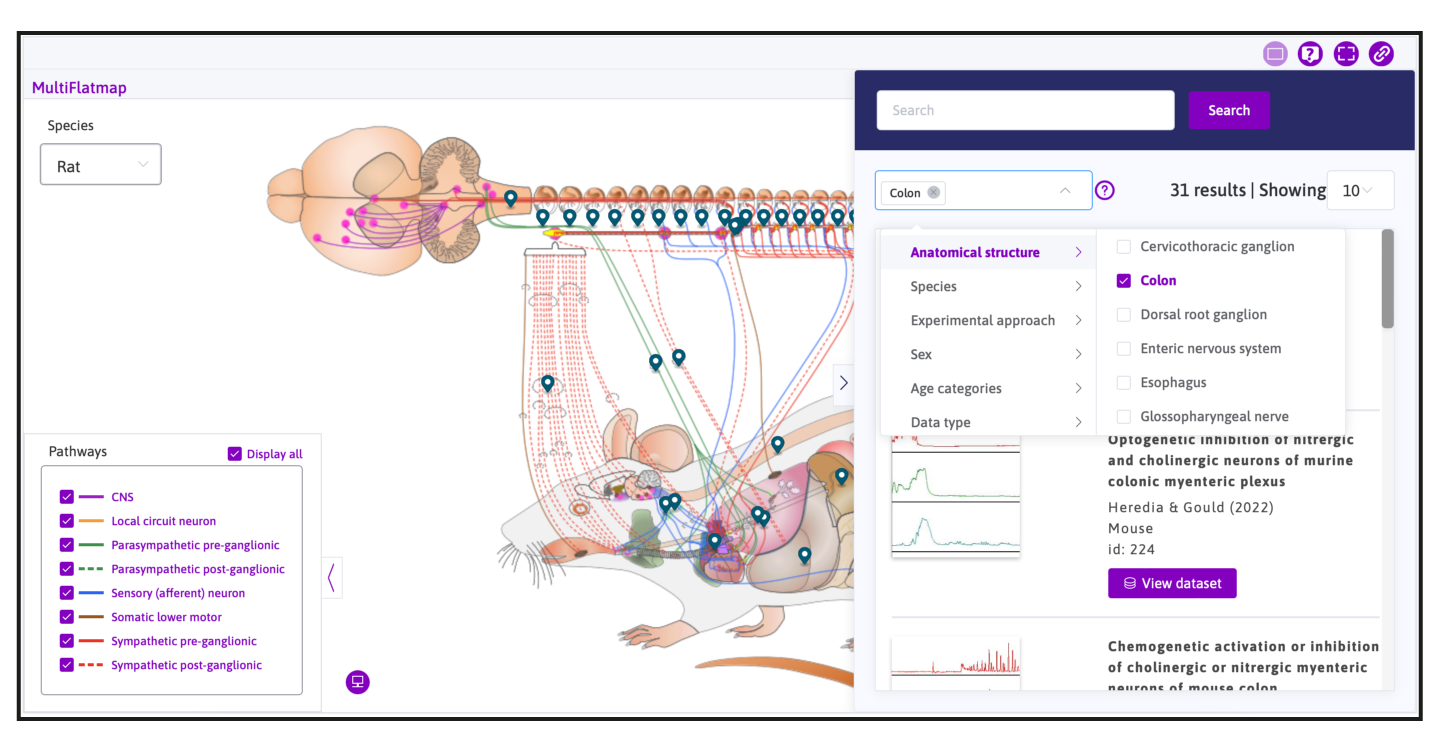
Apply a filter, "colon"
- Apply a second filter. Select "Pig" from the Species category. From Figure XX, you can see that the results have reduced to 10 results. Therefore, our example search is returning results for "colon" AND "pig"
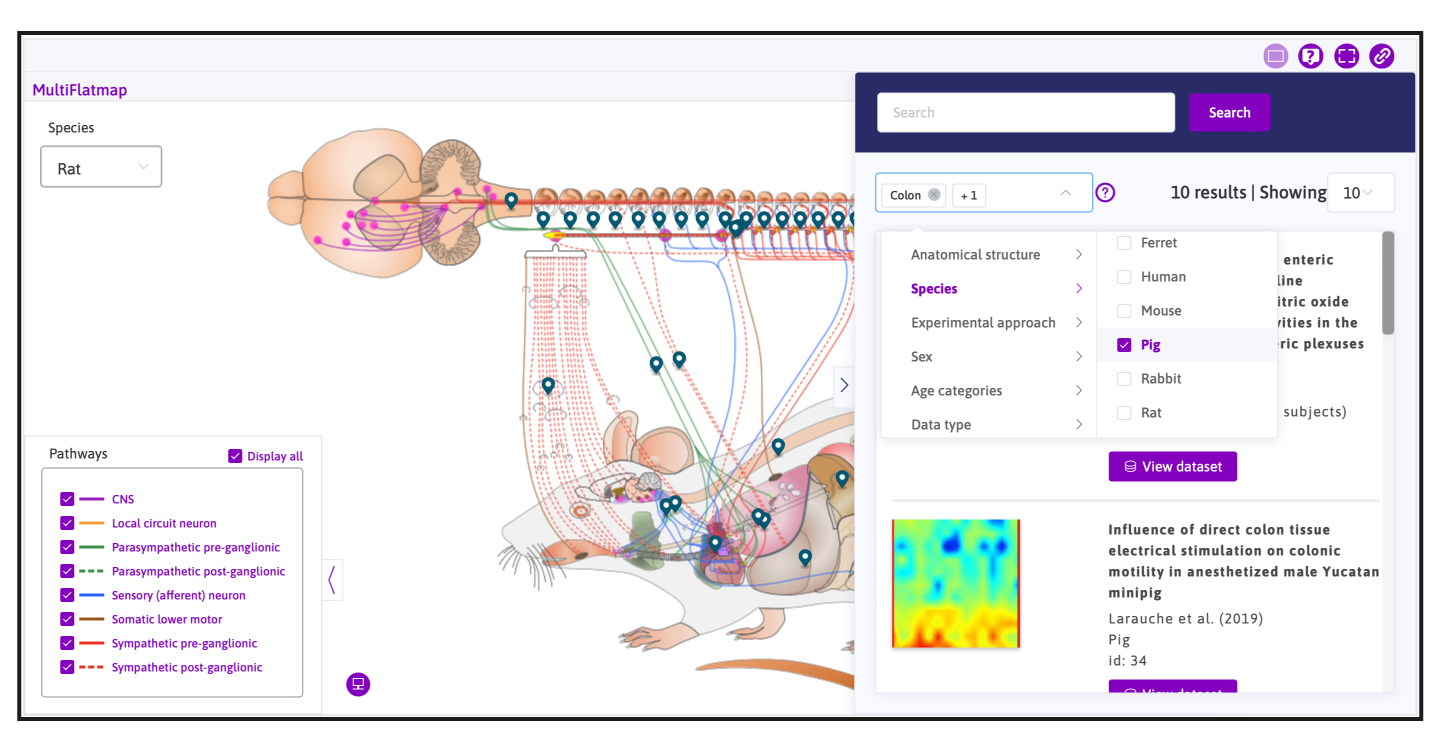
Apply a second filter, "Pig"
- Use the search box to further reduce the number of results. We will enter the term "oxide" in the search box. From Figure XX, you can see that the number of results has reduced even further down to three results. The search box works in conjunction with the filters. This means that the sidebar is returning results for "colon" AND "pig" AND "oxide."
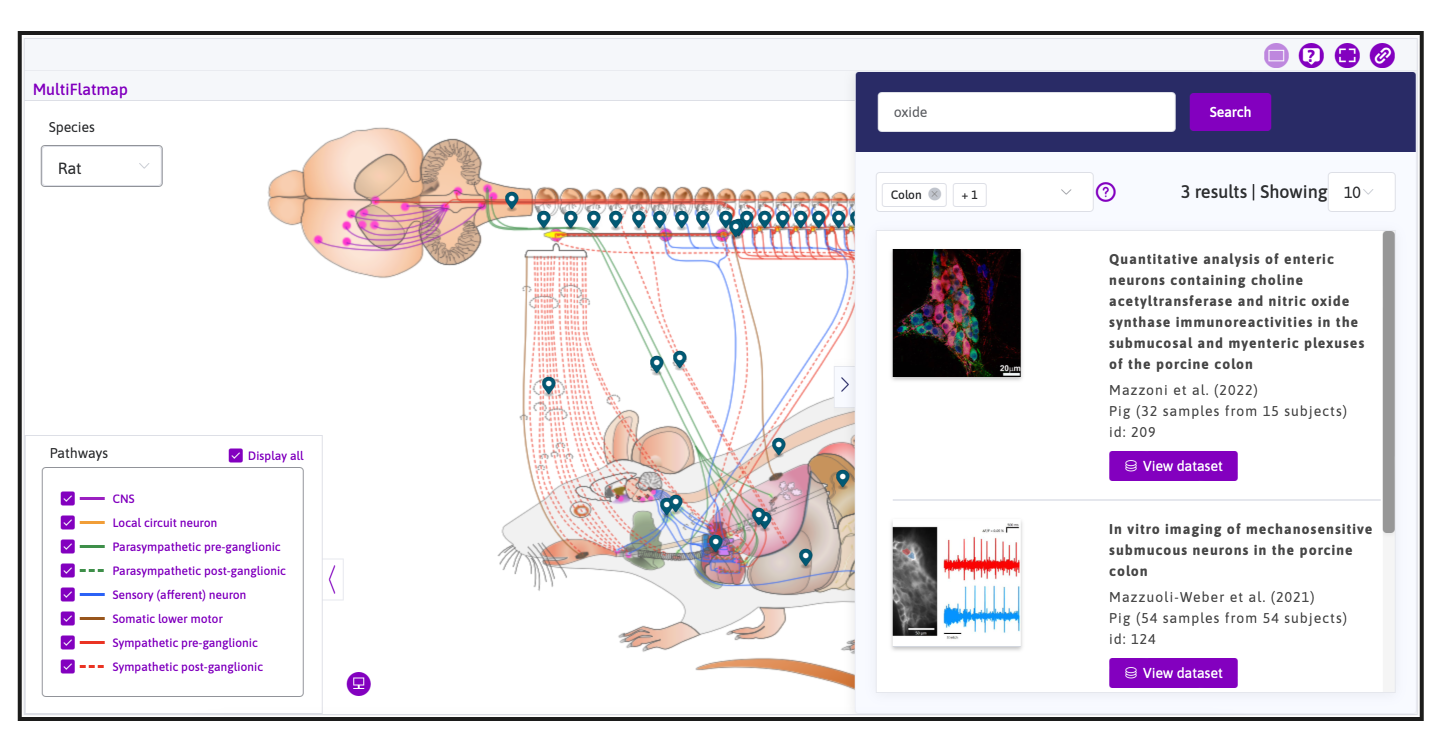
Apply "oxide" search
- Removing filter tags. If you only want results relating to the search term "oxide," you can clear the filters by clicking on the small X next to each filter tag.
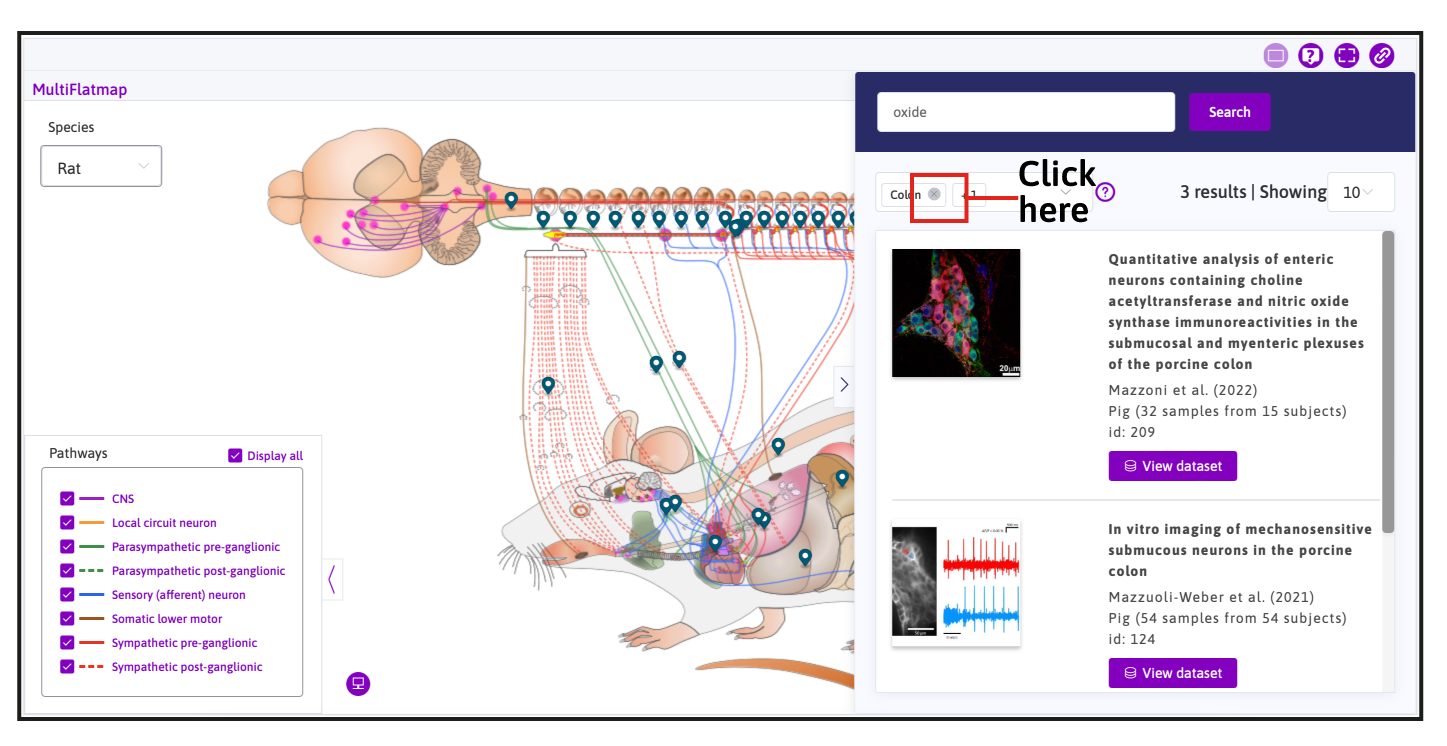
Remove filter tag
Removing both filters will then show all results that have the term "oxide." From Figure XX, you can see that the number of results has increased to six results.

"oxide" search results
Updated 6 months ago
